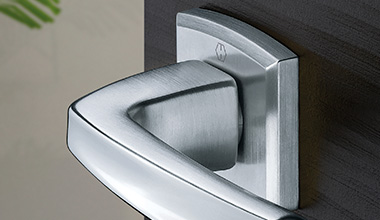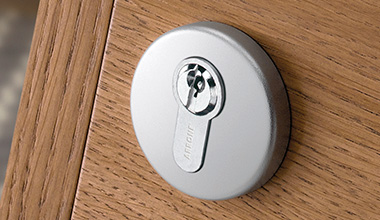BS EN 1125

BS EN 1125:2008 – Panic Exit Devices
It is desirable that doors at final exits in public buildings, places of entertainment, shops etc. should be fitted with panic devices operated by a horizontal push bar or touch bar. The emphasis for products covered by this standard is on safe exit rather than security.
The main purpose of the performance requirements of this standard is to give safe and effective escape through a doorway with minimum effort and without prior knowledge of the device i.e. for locked doors on escape routes where panic situations can be foreseen.
BS EN 1125:2008 applies to type A (push bar panic bolts) and type B (touch bar panic bolts) and classifies panic exit devices by using a 10-digit coding system, each digit referring to a particular feature of the product measured against the standard’s performance requirement.
Digit 1 – Category of use
Only one category is identified:
Grade 3: high frequency of use by public and others with little incentive to exercise care
Digit 2 – Durability
Two categories are identified:
Grade 6: 100,000 cycles
Grade 7: 200,000 cycles
Digit 3 – Test door mass
Three categories are identified:
Grade 5: up to 100 kg
Grade 6: up to 200 kg
Grade 7: over 200 kg
Digit 4 – Suitability for use on fire/smoke doors
Three grades are identified:
Grade 0: not approved for use on fire/smoke door assemblies
Grade A: suitable for use on smoke door assemblies
Grade B: suitable for use on fire and smoke door assemblies based on a test in accordance with BS EN 1634-1
Digit 5 – Safety
All panic and emergency exit devices have a critical safety function, therefore, only the top grade 1 is identified.
Digit 6 – Corrosion resistance
Two grades of corrosion resistance are identified according to BS EN 1670:2007
Grade 3: high resistance
Grade 4: very high resistance
Digit 7 – Security
Only one category of security is identified (grade 2). Panic devices are primarily for the operation of a door from the inside. Safety considerations will always be given priority over security.
Digit 8 – Projection of device
Two categories are defined:
Grade 1: projection up to 150 mm (large projection)
Grade 2: projection up to 100 mm (standard projection)
Digit 9 – Type of device
Two types are defined:
Type A: push bar operation
Type B: touch bar operation
Digit 10 – Field of door application
Three categories are defined:
Category A: single door, double door: active or inactive leaf
Category B: single door only
Category C: double door: inactive leaf only
Other issues
A grade 2 (low projection) panic device should be used in situations where there is restricted width for escape or where doors are not able to open beyond 90º. Panic device push and touch bars should be installed to provide the maximum effective length but never less than 60% of the door leaf width.
Sources:
Door and Hardware Federation (DHF) Best Practise guide – BS EN 1125:2008 & BS EN 179:2008 Panic and emergency exit devices




